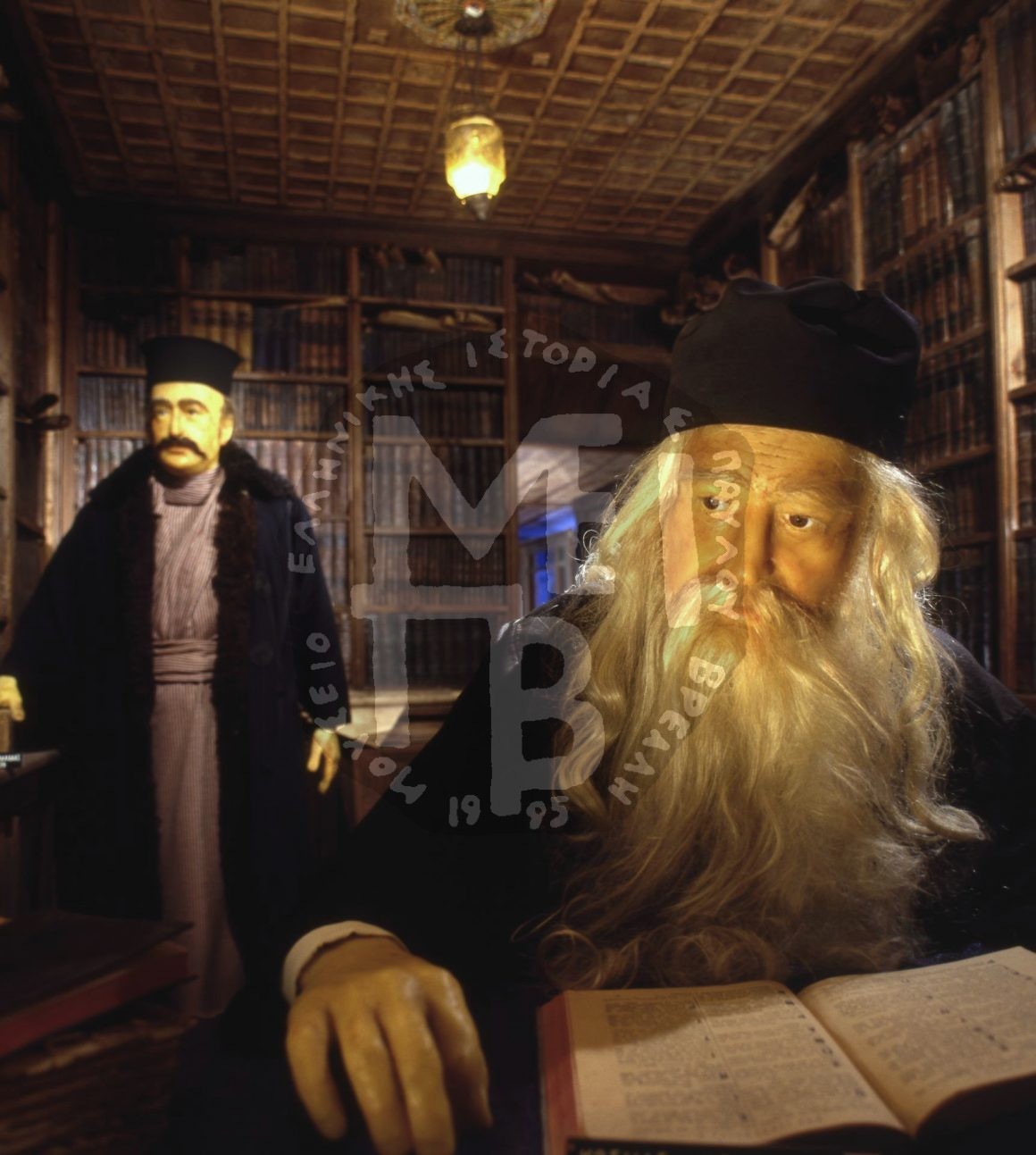In the beginning letters were taught in clandestine schools. Then, little by little, schools came out in the open, where teachers of the nation taught. The foundation of schools was at last allowed. Thus the time of the Greek Enlightment began. In Ioannina the first school was that of Epifanios but later on more schools were created: Giouma, Maroutsea, Kaplanios, Zosimea. These schools turned Ioannina into an important center of culture for higher education.
Some of these teachers received education and stayed in Greece. The Patriarch Academy of Constantinople was the center. The last one of those times was Eugene Voulgaris (1716-1806). Others received education in schools of the enslaved nation but pursued their studies abroad. Byzantine scholars had already cultivated the Greek letters in various areas in Europe and mainly in Italy. Since 1515 the “Greek high school” was in operation in Rome, for example. These people came back to their homeland where they taught in different schools.
Kosmas Balanos (1731-1808) was son of Balanos Vassilopoulos (1694-1760). Born in Ioannina, he was his father’s student and wise like him. He was an unmarried priest and one of the greatest scholars of the nation. His father taught for 37 years, while him himself for 47 years during which he developed important religious and social activity. In 1676, with Manos Gioumas money, he established the renowned ‘Balanea School’. Many distinguished personalities taught there, such as Vissarion Makris, reverent George Sougdouris, and reverent Anastasios Papavasiliou. Because of his conservatism, Balanos came in opposition to his student Athanasios Psalidas. He made great efforts to publish proper books for his students.
Athanasios Psalidas (1767-1828) was the greatest scholar and philosopher of the Greek Enlightment. His student John Vilaras (1771-1823) used to call him ‘Master’.
Psalidas was born in Ioannina. When he was 18 and after graduating Balaneios School, he went to schools in Poltava and Ukraine to pursue his studies. He went to Vienna to study medicine, foreign languages –French, German, Italian and Latin–, Greek philosophy, physics and math and experimental physics, which was a new science at the time. In Vienna he was close to the legendary Rigas Ferreos. Later he joined the Association of Friends.
He was called to teach in his homeland by the board of the elderly of Ioannina, and he came back indeed on 14 September, 1795, after an eight-year-stay in Vienna. He took over Maroutsios School, which closed down in 1797. He persuaded Zois Kaplanis, who was in Russia, to help him open a School named after him, Kaplanios School. He enriched the school with libraries and scientific instruments of experimental physics and chemistry. Kaplanios School was made into a Higher Education institution, a center of culture. Great students graduated from it like Asopios, Kranas, Sakellariou etc. and learned teachers too. It operated until 1820.
Ali-pasha and his two sons went to attend his experiments. They saw for themselves he did not have mysterious and evil tools and apparatus, as it was rumored; he simply experimented on static electricity. Ali-pasha himself needed him as translator and interpreter. As a member of the Association of friends, he rendered great services.
He taught Modern Greek in demotic. He put out book of syntax and vocabulary of the speaking language and he was in favor of the abolition of narration-spelling. He also suggested ancient texts be translated to demotic Modern Greek. He introduced Latin and physical science in new teaching methods. He was honest, he believed what he said and applied it.
He stayed in Ioannina from 1795 to 1820. The siege of the sultan troops made him leave together with John Vilaras to Tsepelovo, Zagori, until 1822. Then he went to Corfu. Embittered, he got by private tuition. Everything he had, he offered it to the Cause with all his heart. He even sent his son, Peter, to fight in Messologgi, where he died.
He did not manage to become a professor at Ionian Academy in Corfu, because the Englishmen considered him to be in favor of the Russians! He was appointed at a high school in Lefcada in 1828. He died embittered some time later, in July 1829, at the age of 62. With honesty, fighting spirit, pride and selflessness, that pioneer offered 34 years of teaching to the enslaved nation. In 1814, his student, John Vilaras, put out a grammar of demotic Greek which he dedicated to his teacher.
The room is very small. I make use of the auxiliary places destined to the maintenance of the museum, creating an extension of the bookcase-behind the colored glass door. In this way the visitor is given the impression that this room communicates with the other one, the far end reaching 7m long. In the interior I made the ceiling look old and rosette of that period. The ceiling is made of cork, using colors, dust and rubber so as to achieve the right effect.
As for the objects in this theme (the old lamp, the inkpots, the pocketknife and mug), they are from our old house in Ioannina. The objects of clay with the patinas were made with my potter’s wheel and baked in at a temperature of 930 degrees centigrade in my workshop in Ioannina. The bookcases are from old interior doors. The hair of the two teachers is of synthetic hair. The books of the bookcase, around1250, are made of gypsum and painted with egg temperas, after being processed with dust and rubber. The parchments and scrolls are from butcher’s wrapping paper with patina.
Kosmas Balanos, a priest in maturity, is portrayed seated, reading texts pertaining to the fathers of the church in the office of Balanios School. Athanasios Psalidas is portrayed standing up, holding the ‘demotic language’ grammar by John Vilaras. Both of them, like wise Teachers of the Nation, are in spiritual atmosphere, among bookcases and scrolls. Each one is looking at a different direction and has different posture the same way their schools differed.

